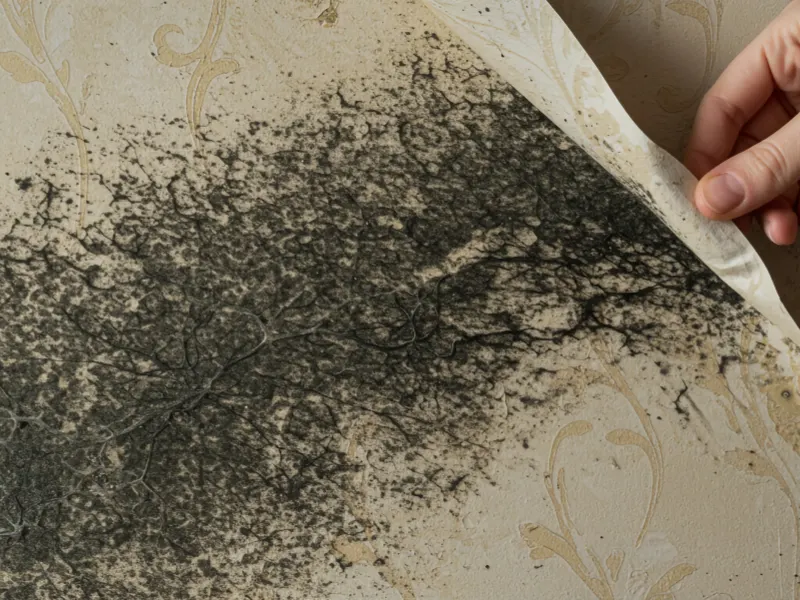Mold Remediation

Safe. Thorough. Certified.
Professional Mold Remediation Services in Idaho
When mold threatens your home or business, quick and professional action is critical. Our certified team provides comprehensive mold remediation to eliminate contamination safely and permanently.
From black mold removal to complete cleanup, we use industry-approved containment, filtration, and sanitization techniques. Serving Boise, Meridian, Nampa, and surrounding Idaho communities, our experts restore healthy air quality and ensure your property is safe for everyone inside.
Protect Your Health and Property
Unchecked mold growth can damage structures and affect your health. Our Idaho team provides certified mold removal services to stop it at the source. We specialize in safe, effective toxic mold remediation that restores clean air and peace of mind.
Our Process
How We Remove Mold Safely
At Complete Restoration Services, every project begins with a professional inspection to identify contamination levels, moisture sources, and the type of mold present.
Once we confirm the scope of the problem, our mold cleanup specialists set up containment barriers and use negative air pressure systems to prevent spores from spreading to unaffected areas. Using HEPA air scrubbers, vacuums, and specialized cleaning agents, we remove visible mold and treat hidden areas to ensure complete elimination.
After remediation, we thoroughly sanitize and deodorize the affected area, restoring fresh, healthy air. We then perform moisture testing to ensure your property remains dry and mold-free. Our precise, safety-first approach delivers long-term protection for homes and businesses across Idaho.

Why Proper Remediation Matters
Improper or incomplete mold cleanup can allow spores to spread and regrow within days, putting your property and health at serious risk. That’s why choosing certified professionals for mold remediation is critical.
Our experienced technicians use advanced detection tools, containment systems, and cleaning protocols to isolate the problem and remove it completely. We specialize in toxic mold remediation, safely handling dangerous strains like black mold through strict containment and decontamination measures.
Every mold cleanup specialist on our team follows IICRC and EPA standards for testing, cleaning, and disposal, ensuring that every affected surface is fully treated. Once removal is complete, we perform a secondary inspection and optional lab testing to verify the results. We also address the underlying cause, such as leaks, humidity, or poor ventilation, to prevent future mold growth.
Our certified mold removal services protect both your structure and your health, restoring air quality and peace of mind. Idaho homeowners and business owners rely on us for expert service, fast response, and lasting results.
Comprehensive Solutions
Complete Mold Removal and Prevention
Our mold remediation process goes beyond surface cleaning; it eliminates contamination at its source to ensure your home or business stays mold-free long after the work is done. We start by isolating the affected area with containment barriers and HEPA filtration systems to prevent cross-contamination. Our certified mold cleanup specialists carefully remove contaminated materials, using advanced negative air systems and specialized equipment to stop spores from spreading.
Next, we perform detailed black mold removal and surface disinfection with eco-friendly, EPA-approved solutions that eliminate toxins, bacteria, and lingering odors. For high-risk or large-scale cases, we conduct advanced toxic mold remediation designed to safely neutralize hazardous mold species like Stachybotrys (black mold). Our comprehensive process also includes structural drying, air purification, and preventive moisture control treatments to stop future growth.
We focus on creating a healthy, breathable environment that protects your family, employees, and property. After remediation, our inspectors verify humidity stability, test air quality, and confirm your space is completely restored and safe.
Every project concludes with a detailed report, before-and-after photos, and practical recommendations for maintaining long-term air quality. Serving Boise, Meridian, Nampa, and surrounding Idaho communities, we provide proven, science-based mold removal services that restore comfort, safety, and peace of mind for every client.
Frequently Asked Questions
How do I know if I need mold remediation?
If you see visible mold, smell musty odors, or have water damage, contact our mold cleanup specialists for inspection and removal.
Is black mold dangerous?
Yes. Black mold removal requires professional handling due to potential health risks like respiratory irritation and allergies.
What’s included in your mold removal services?
We handle containment, mold remediation, cleaning, sanitization, and post-remediation testing to ensure safety and air quality.
Do you offer toxic mold remediation?
Yes. Our certified technicians are trained to safely remove and treat all types of mold, including toxic varieties.
How long does remediation take?
Most mold removal services take 1–3 days, depending on the extent of contamination and property size.
Can mold come back after removal?
Not if the underlying moisture problem is resolved. We include moisture control as part of our mold remediation process.
Do you serve all Idaho areas?
Yes. We proudly provide mold remediation in Boise, Meridian, Nampa, and surrounding Idaho communities.
